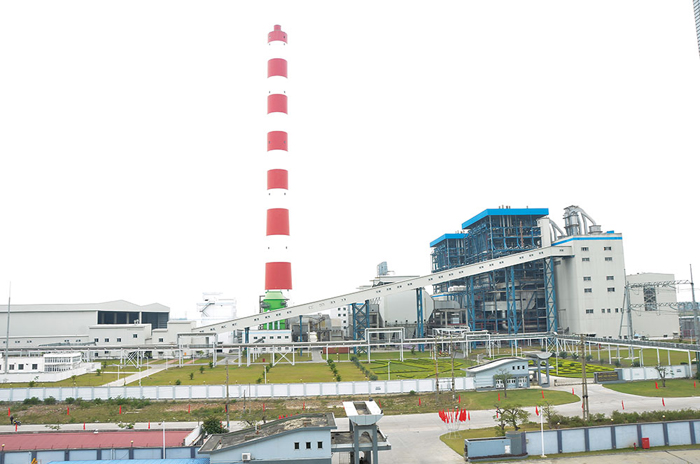The competitive electricity generation market has contributed to increasing transparency and fairness in scheduling, mobilizing the output from power plants, contributing to optimizing the whole system, creating motivation and trust for investors.
From perspective of an enterprise, Mr. Nguyen Van Thanh, Deputy General Director of Hai Phong Thermal Power Joint Stock Company, said that since participating in the market, the Company had been proactively prepared production plan, properly met the demand of mobilizing power output. The operation mode of generator units had been more and more accurately developed, thereby specific time of operation of each unit had been defined to make it appropriate with cycles, dry or rainy season.

Hai Phong Thermal Power Plant - one of units effectively participating in competitive electricity generation market
“In the dry season, the Company always set out requirements of high power generation output, bringing great efficiency in parallel with proactively developing plans to repair generator units. In the rainy season, in addition to improving production efficiency, a reasonable schedule for the units need to be arranged, ensuring for the dry season with units operating in the most effective manner,” shared Mr. Thanh.
With the same viewpoint, Mr. Phung Van Sinh, Deputy General Director of Power Generation Corporation 1, said that the competitive electricity generation market had been officially operated, helping enterprises to be more proactive in calculating and preparing operation plans, mobilization schedules as well as maintaining, repairing units.
However, for thermal power plants, due to variable-cost offers, the market price during the day always fluctuates by each trading cycle, leading to increase or decrease in output many times a day, affecting life-cycle of equipment and increasing risk of incidents.
For hydropower plants, having to offer prices simultaneously with meeting the requirements of water discharge in the flood season as well as requirements of domestic water for the downstream area in the dry season faces with difficulties, affecting revenue, etc.
Solutions to these issues have been sought by management agencies, EVN and other units for early handling to ensure the security of the power system as well as the efficiency and feasibility of the units participating in the market.
Although the number of power plants as well as their power generation capacity directly taking part in the market has been increasing, from 31 to 87 plants, according to Mr. Nguyen Anh Tuan, Head of the Electricity Regulatory Authority of Vietnam, it all has accounted for only 49% of the total installed capacity. The Authority will continue to study on and put EVN’s multi-purpose strategic hydropower plants into the market. Renewable energy plants such as wind power, solar power, etc., shall be piloted in the market.
From successes and experiences gained in 6 years of development of the market, related units have been in a rush to officially deploy the competitive wholesale electricity market in 2019.
Installed capacity structure under participation mode in competitive electricity generation market:
|
Type
|
Number of plant
|
Capacity (MW)
|
Proportion (%)
|
|
Plant directly participating
|
87
|
22,851.5
|
49
|
|
Plant indirectly participating
|
28
|
9,049.9
|
19
|
|
Plant temporarily indirectly participating
|
12
|
3,169.5
|
7
|
|
Multi-purpose plant and operating coordination
|
14
|
8,661
|
19
|
|
Other types
|
|
2,749
|
6
|